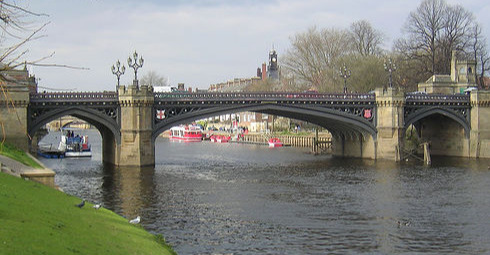1837–1901: Victorian York
A booming city with a darker side

The Victorian age saw York boom.
It was a centre of the railway revolution. The first train to London ran in 1840. By the 1850s there were 13 trains a day, and York became a tourist centre.
The new the chocolate industry took hold and Rowntree's and Terry's cocoa works flourished. The first heavy industry also came to the city, largely serving the railways, for example, though York never became a major industrial centre.
The city attracted migrants from other parts of the country and from Ireland. Parts of the city centre housed desperately poor people in appalling, overcrowded slums. Their conditions were meticulously described and recorded in 1899 by the Quaker Seebohm Rowntree, a scion of the eponymous chocolate manufacturer, in ground-breaking social science research.
Examples of Victorian buildings are the Art Gallery, the railway station and Skeldergate Bridge, originally a swing bridge.

In the Castle Museum Kirkgate provides an impression of a street and shops of the time.
Legend has it that Victoria herself was no great friend of York, however. She was said to avoid it after the Royal Station Hotel charged the royal party for tea. Her royal train has nevertheless found a permanent home in York at the National Railway Museum.